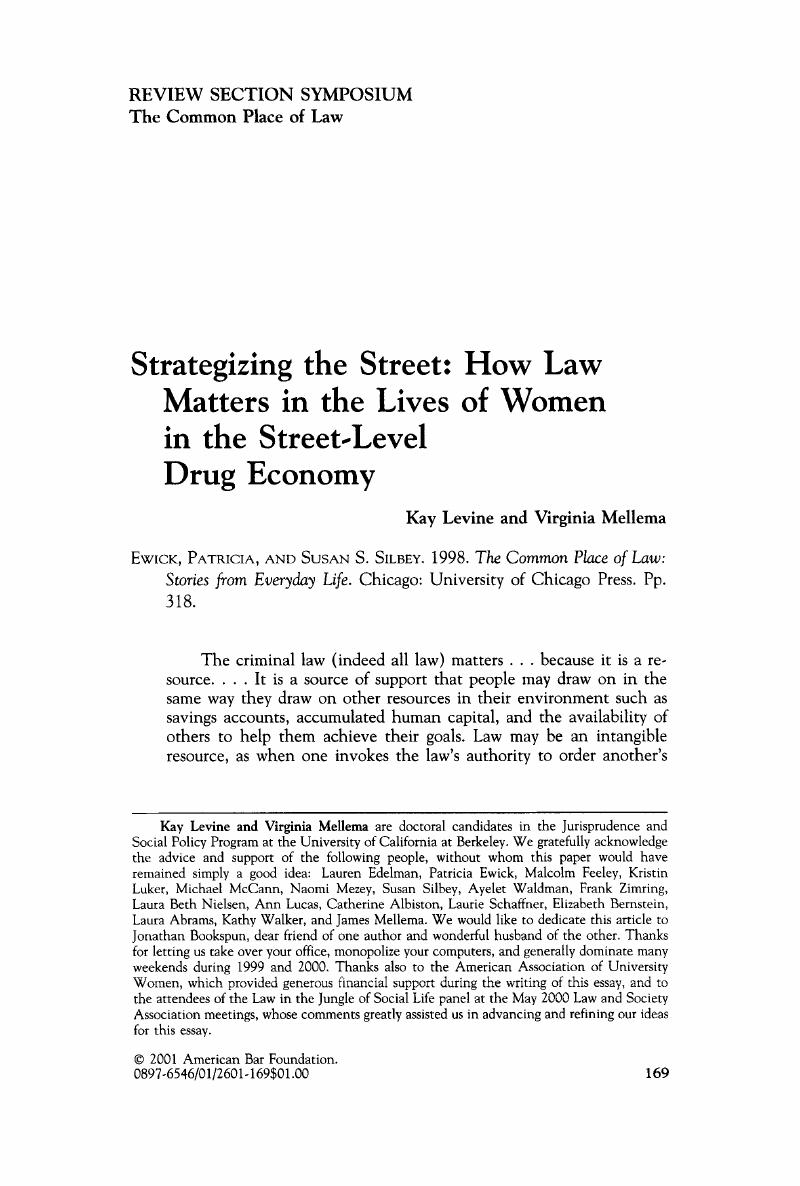Crossref Citations
This article has been cited by the following publications. This list is generated based on data provided by Crossref.
Connolly, Catherine
2002.
The Voice of the Petitioner: The Experiences of Gay and Lesbian Parents in Successful Second-Parent Adoption Proceedings.
Law & Society Review,
Vol. 36,
Issue. 2,
p.
325.
Kostiner, Idit
2003.
Evaluating Legality: Toward a Cultural Approach to the Study of Law and Social Change.
Law & Society Review,
Vol. 37,
Issue. 2,
p.
323.
Marshall, Anna-Maria
2003.
Injustice Frames, Legality, and the Everyday Construction of Sexual Harassment.
Law <html_ent glyph="@amp;" ascii="&"/> Social Inquiry,
Vol. 28,
Issue. 3,
p.
659.
Marshall, Anna-Maria
2005.
Idle Rights: Employees' Rights Consciousness and the Construction of Sexual Harassment Policies.
Law & Society Review,
Vol. 39,
Issue. 1,
p.
83.
Silbey, Susan S.
2005.
AFTER LEGAL CONSCIOUSNESS.
Annual Review of Law and Social Science,
Vol. 1,
Issue. 1,
p.
323.
Aviram, Hadar
2005.
How Do Social Movements Decide to Move? Polyamorous Relationships and Legal Mobilization.
SSRN Electronic Journal,
Marshall, Anna-Maria
2006.
Communities and Culture: Enriching Legal Consciousness and Legal Culture.
Law <html_ent glyph="@amp;" ascii="&"/> Social Inquiry,
Vol. 31,
Issue. 1,
p.
229.
Harding, Rosie
2006.
‘Dogs Are “Registered”, People Shouldn’t Be’: Legal Consciousness and Lesbian and Gay Rights.
Social & Legal Studies,
Vol. 15,
Issue. 4,
p.
511.
Aviram, Hadar
2008.
Make Love, Now Law: Perceptions of the Marriage Equality Struggle Among Polyamorous Activists.
Journal of Bisexuality,
Vol. 7,
Issue. 3-4,
p.
261.
Earl, Jennifer
2008.
The Process Is the Punishment: Thirty Years Later.
Law & Social Inquiry,
Vol. 33,
Issue. 03,
p.
735.
Hertogh, Marc
2009.
What's in a Handshake? Legal Equality and Legal Consciousness in the Netherlands.
Social & Legal Studies,
Vol. 18,
Issue. 2,
p.
221.
Edelman, Lauren B.
Leachman, Gwendolyn
and
McAdam, Doug
2010.
On Law, Organizations, and Social Movements.
Annual Review of Law and Social Science,
Vol. 6,
Issue. 1,
p.
653.
Berti, Mario
2010.
Handcuffed Access: Homelessness and the Justice System.
Urban Geography,
Vol. 31,
Issue. 6,
p.
825.
Belleau, Hélène
and
Cornut St-Pierre, Pascale
2013.
Pour que droit et familles fassent bon ménage.
Nouvelles pratiques sociales,
Vol. 25,
Issue. 1,
p.
62.
Boittin, Margaret L.
2013.
New Perspectives from the Oldest Profession: Abuse and the Legal Consciousness of Sex Workers in China.
Law & Society Review,
Vol. 47,
Issue. 2,
p.
245.
Scoular, Jane
2014.
¿Qué transa con la ley? Por qué y de qué forma es relevante el derecho para la regulación del trabajo sexual.
Debate Feminista,
Vol. 50,
Issue. ,
p.
220.
Albiston, Catherine R.
Edelman, Lauren B.
and
Milligan, Joy
2014.
The Dispute Tree and the Legal Forest.
Annual Review of Law and Social Science,
Vol. 10,
Issue. 1,
p.
105.
Ranasinghe, Prashan
2014.
The Humdrum of Legality and the Ordering of an Ethic of Care.
Law & Society Review,
Vol. 48,
Issue. 4,
p.
709.
Paneyakh, Ella
2014.
Faking performance together: systems of performance evaluation in Russian enforcement agencies and production of bias and privilege.
Post-Soviet Affairs,
Vol. 30,
Issue. 2-3,
p.
115.
Carbone-Lopez, Kristin
2015.
Above the Law’: Changes in Methamphetamine Laws and the Deterrent Impact on Market-Involved Women.
American Journal of Criminal Justice,
Vol. 40,
Issue. 3,
p.
682.



